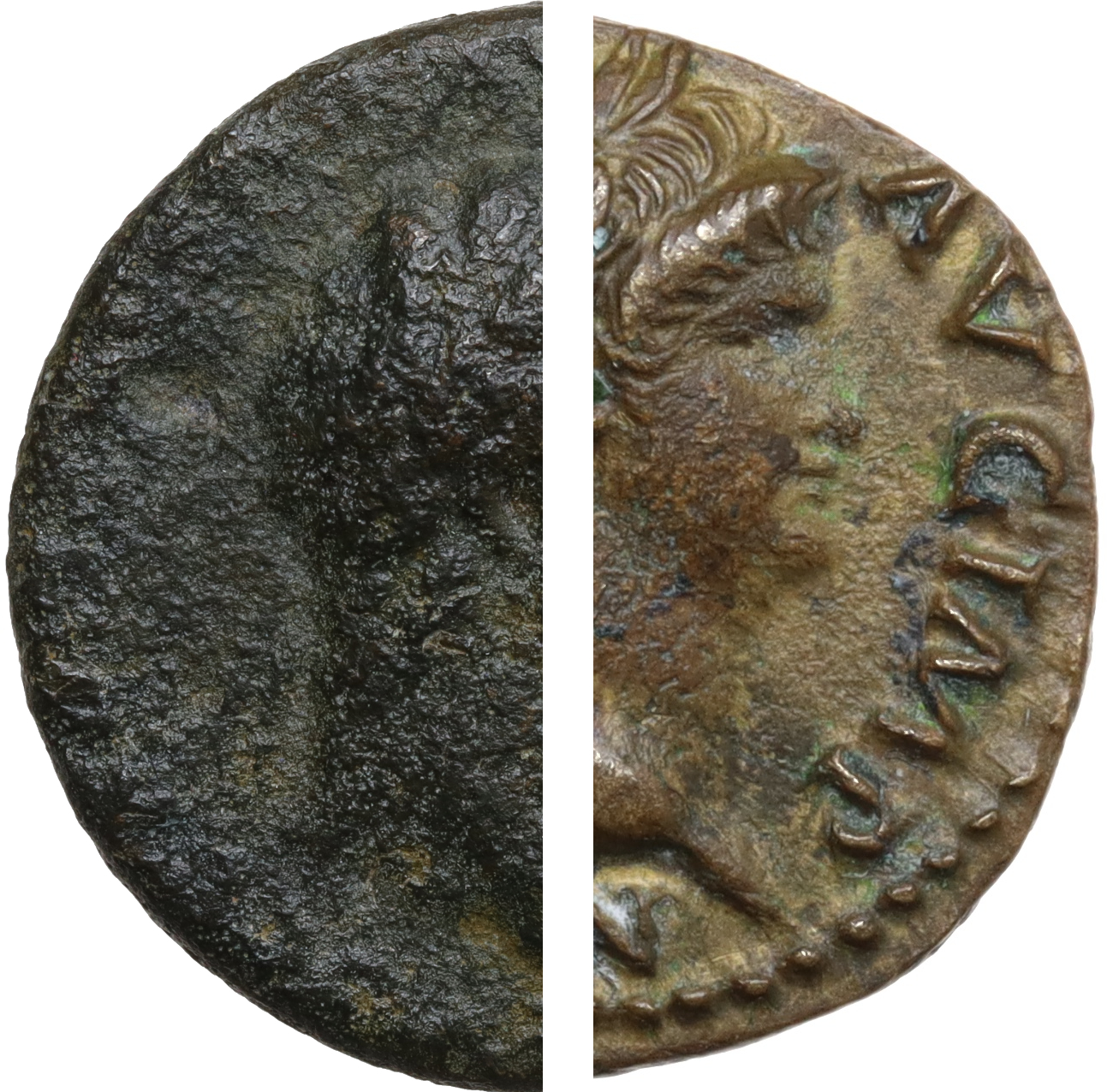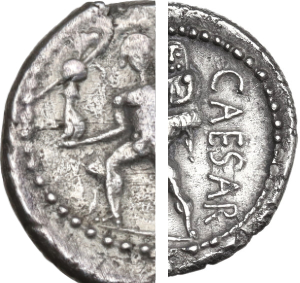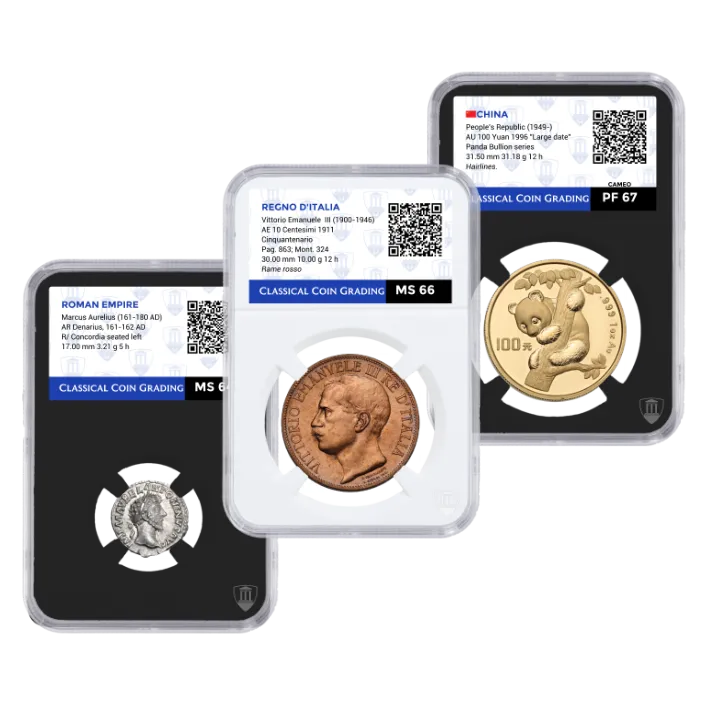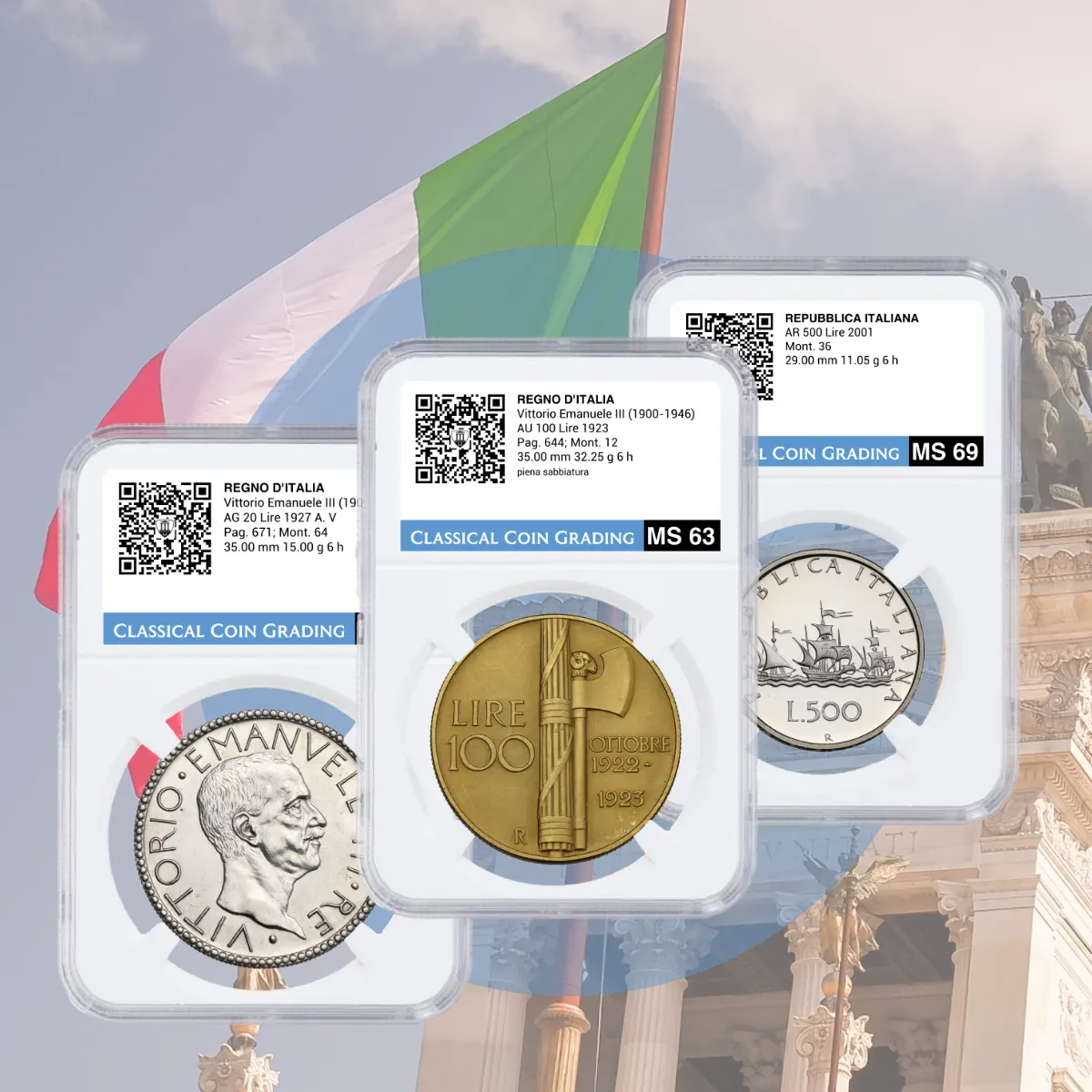Grading Scale
The rating scale adopted by Classical Coin Grading is based on the Sheldon's scale, international measure for the conservation states of coins around the world.
The Sheldon scale is applied to ancient and modern coins considering the peculiarities of the reference issues. After grading and evaluating the authenticity of the coins, Classical Coin Grading assigns a code to the coin and a number that correspond to a specific state of conservation.
With regard to the application of the reference judgments, a single distinction is made associated with two types of coins: ancient coins, i.e. minted with artisanal techniques, and modern coins, i.e. machine-minted. Given the dating and technical characteristics that distinguish them, Ancient coins are valued according to a special process that provides, in addition to the normal assignment of the score, a bonus/malus evaluation based on centering, patina, roundel characteristics, style, minting imprint and glance.
Grading Scale
To make it easier to understand, we present below a comparison table between our grades (MS, AU, XF, VF, etc.) and those traditionally used in Italy, such as Uncirculated, Splendido, Bellissimo, etc.
Our goal is to offer a clear, repeatable and verifiable valuation, which can serve as a reliable reference for both the collector and the market.
For modern coins
Modern coins are minted using high-precision machines in an industrial process. For modern coins, a distinction is made between the following types of issues.
For ancient coins
Ancient coins are minted using artisanal techniques. In addition to an evaluation expressed according to the Sheldon scale, we have introduced 7 parameters to better specify the degree of conservation of this type of coin. These parameters are used internally as discriminants to evaluate the currency.
Evaluation example:
 Patina Differences
Patina Differences  Surface Differences
Surface Differences 


